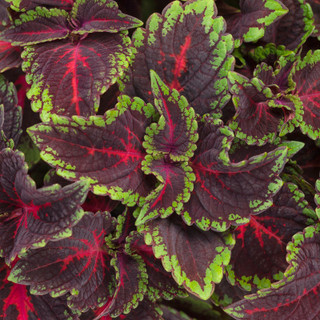
Geraniums
Uses:
- Houseplant
- Cottage Gardens
- Containers
Features:
- Long Bloom Time
- Vibrant Colors
- Attracts Pollinators
Sunlight:
- Partial Sun to Full Sun
- 5+ Hours of Direct Sun
- Bright Direct or Indirect Light Indoors
Geraniums (Pelargonium) are a favorite bedding plant in the garden or in hanging baskets. But they are also commonly grown indoors as houseplants. Geraniums are appreciated for their long blooming season that starts in spring and can last into fall.
Why Buy Geraniums Online?
Annual geraniums are scientifically known as Pelargonium, and perennial geraniums, or cranesbill, belong to the Geranium genus. Both annual and perennial geraniums are appreciated for their long blooming season that can last into fall. Annual geraniums flower in shades of white, red, pink, purple, mauve, orange, and reddish-black. An excellent choice for sunny beds and borders, geraniums also make a standout filler for containers. The most common varieties average 2 to 4 feet tall and wide, dwarf cultivars reach 5 to 8 inches, and ivy types spread 6 to 48 inches.
Use as a filler in containers
Perfect for garden beds and borders
Available in shades of white, red, pink, purple, mauve, & orange
Deer resistant and drought tolerant
Growing zones 9-12 or as an annual elsewhere
Can be grown indoors as a houseplant
About Geraniums

Cranesbills, Pelargonium, Storksbills
Europe, Asia, North America
Annuals, Perennials
Deciduous
4 - 8
Pink, Red, Purple, Blue, White
Late spring to early summer
Clumping, Mounding, Trailing
Bees, Hummingbirds, Butterflies
Drought, Poor Soil
Deer, Pests, Diseases, Heat
How To Use Geraniums In The Garden
Geranium offers a long season of bright, cheerful color, which starts in spring and can last into fall. These easy-care plants adapt well to most conditions, requiring only moderate watering and occasional deadheading. Their blooms, which arrive in a range of shades from soft pastels to intense reds, can brighten containers or garden beds. Scented varieties contain fresh, aromatic oils in their leaves and help deter pests.
For edging a bed, geranium pairs beautifully with finer-textured plants like ornamental grasses or lacy annuals. Grow them at the base of upright perennials to fill in gaps and disguise lower leaf loss. Companion planting with geraniums is beneficial because they deter common pests like spider mites, leafhoppers, and cotton aphids. When used in containers, the big, rounded heads of geranium flowers contrast beautifully with spiky plants, such as celosia, and are accented by fine-textured foliage, like ferns. You can also plant them in hanging baskets, where the trailing forms can cascade elegantly over the sides.
Types of Geraniums
| Type | Scientific Name | Flower | Foliage | Habit | Features |
|---|---|---|---|---|---|
| Zonal Geranium | Pelargonium × hortorum | Single or double globes in red, pink, salmon, white, purple, etc. | Rounded, hairy green leaves with a darker zone band | Upright, bushy stems | Long-blooming, heat-tough, easy care |
| Ivy Geranium | Pelargonium peltatum | Loose umbels of single/double blooms, wide colour range | Smooth, shiny, ivy-shaped, waxy leaves | Trailing/cascading | Self-cleaning forms; drought-tolerant; showy cascades |
| Regal (Martha Washington) | Pelargonium × domesticum | Very large, ruffled, often bi-colour petals with dark eye | Serrated, sometimes downy, medium green | Compact, woody shrub | Most spectacular flowers; tolerates low winter light; overwinter easily |
| Angel Geranium | Hybrid (Regal × P. crispum) | Small pansy/violet-like, often bi-coloured | Small, round or lobed leaves | Dwarf, mounded | Mass of dainty blooms, compact size |
| Fancy Leaf Geranium | Fancy-leaf cultivars of Pelargonium × hortorum | Modest clusters; wide colour range | Dramatically variegated, tri-colour, gold or maroon-banded leaves | Upright like zonals | Striking ornamental leaves; collectible diversity |
| Scented Geraniums | Many species & hybrids (e.g. P. graveolens, P. tomentosum, P. citriodorum) | Small, pale pink-lavender | Glandular, deeply cut or quilted; scented rose, lemon, mint, apple, etc. | Bushy, open; can trail | Aromatic oils, deer-resistant, drought-tolerant |
Geraniums Care
Plant annual geraniums (Pelargoniums) in rich, well-drained soil where they receive full sun. Hardy geraniums can handle more sunlight conditions, but perform better with afternoon shade in hot climates. Water every few days, allowing the soil to dry out between waterings. Container-grown geraniums benefit from fertilization every 2-4 weeks.
Prune annual geraniums by cutting them back by one-third in spring and fall to maintain compact growth. Overwinter annuals indoors in sunny, cool locations, watering when the top inches of soil are dry. Perennial geraniums can be cut back to a few inches above ground in fall or spring. Apply a layer of mulch to protect the root zone from freeze-thaw cycles.
Learn More About Geranium Care

Geranium Companion Plants
Geraniums are an excellent choice for beds and borders along with other annuals or perennials. Companion planting with geraniums is beneficial because they deter some very common and destructive pests. Scented geraniums are also believed to deter spider mites, leafhoppers and cotton aphids. Used in containers, the big, rounded heads of geranium flowers are ideal for contrasting spiky plants, such as celosia, and are accented beautifully by fine-texture foliage, such as ferns. Here are our favorites to grow with geraniums.








































